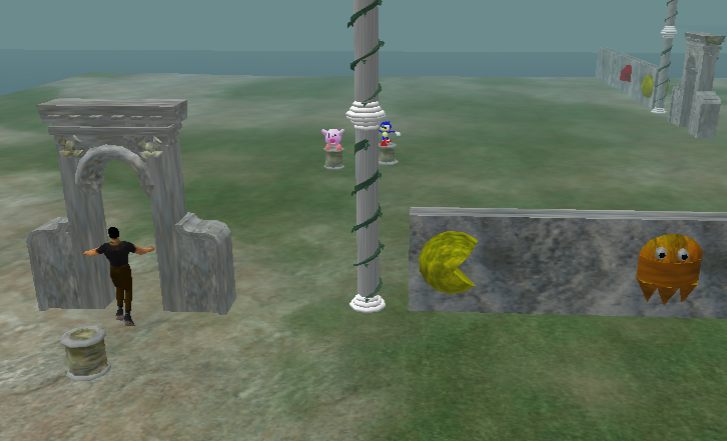Stuart Moulthrop has a delightful articles, Learning, change and the utopia of play in the recent and first issue of Learning Inquiry (Pages 51-7, Vol. 1, No. 1, April, 2007). He discusses how computer game play and learning could be rather than how they might be exploited. He starts by talking about open culture and how games encourage learning through modding and changing meaning in open works which is a more active way of learning. Mouthrop makes an interesting point about the difference between interacting with a game and reading. He goes out of his way to call attention to the ways academics are slipping into talking about “reading” games as if they were “texts”. This point can’tbe overemphasized.
Readers absorb and acquire. Browsers, surfers, interactors, adventurers, players – pathworkers all – explore and experiment. In pathwork, we do not process the symbol system to yield some ultimate, univocal meaning, but rather investigate and perhaps realize some of its possibilities: but always some, not all. Any contingent recognition extracted from the system is framed against a network of alternatives, experienced or imagined. Interactive systems make substantially different demands and inculcate ways of thinking about signs quite distinct from those enforced by writing … It seems very odd, then, to call this reading. (p. 55)
The reason we are tempted to talk about games as text goes back to our academic sense of authorship.
From the dissertation forward, most academic humanists are also trained, evaluated, and promoted as solo performers. So when a professor of literature or media studies works with a software designer, student, or professional, each goes home to a very different social space. The professor repairs to a private office, the designer most likely to a cubicle farm. It is interesting to consider this difference in scenery as the architectural correlative of open versus closed cultures. The professor is expected to reflect and write, a process that for humanists generally ends in some kind of monograph. The software designer either contributes components to a team project, or perhaps manages the team, and the product of these labors comes with many names attached. (p. 56)
Presumably learning through games encourages learners to understand themselves as part of larger projects rather than as Cartesian heroes meditating alone on thought.
What Moulthrop is worried about is how games could be exploited in learning. They could be used as rewards or used to drill skills. In any case we need to consider how a game is not a game when used for a purpose, especially that purpose children dread, learning.
Indeed, games probably appeal to children largely because they are excluded from the formal culture of school. If this distinction is neglected, games might be used simply as extracurricular rewards: learn your lessons, earn playtime. Much worse, they might be brought into the classroom only as delivery systems for reinforcement of narrowly defined goals, i.e., as drill-and-practice resources for standardized tests. Needless to say, both these approaches strip away the dimension of “open culture” or re-creativity, since they would necessarily limit, not realize, possibilities for change. (p. 54)


